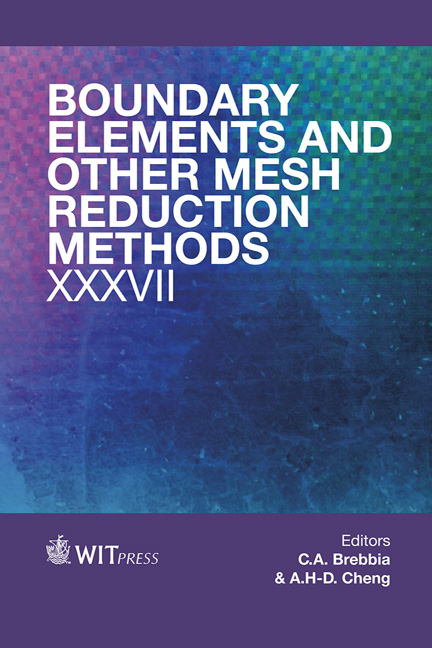A BEM And FEM Analysis Of Fluid–structure Interaction In A Double Tank
Price
Free (open access)
Transaction
Volume
57
Pages
13
Page Range
13 - 25
Published
2014
Size
1400 kb
Paper DOI
10.2495/BE370021
Copyright
WIT Press
Author(s)
J. Ravnik, E. Strelnikova, V. Gnitko, U. Ogorodnyk
Abstract
In this paper we present a fluid–structure interaction analysis of shell structures with compartments partially filled with a liquid. The compound shell was a simplified model of a fuel tank. The shell is considered to be thin and Kirghoff–Lave linear theory hypotheses are applied. The liquid is ideal and incompressible. Its properties and the filling levels may be different in each compartment. The coupled problem is solved using a coupled BEM and FEM in-house solver. The tank structure is modelled by FEM and the liquid sloshing in fluid domain is described by BEM. The method relies on determining the fluid pressure from the system of singular integral equations. For its numerical solution the boundary element method was applied. The boundary of the liquid computational domain is discretized by nine-node boundary elements. The quadratic interpolation of functions and linear interpolation of flux are involved. The natural frequencies were obtained for the cylindrical double tank with two compartments.
Keywords
fluid–structure interaction, baffles, free vibrations, boundary and finite element methods





